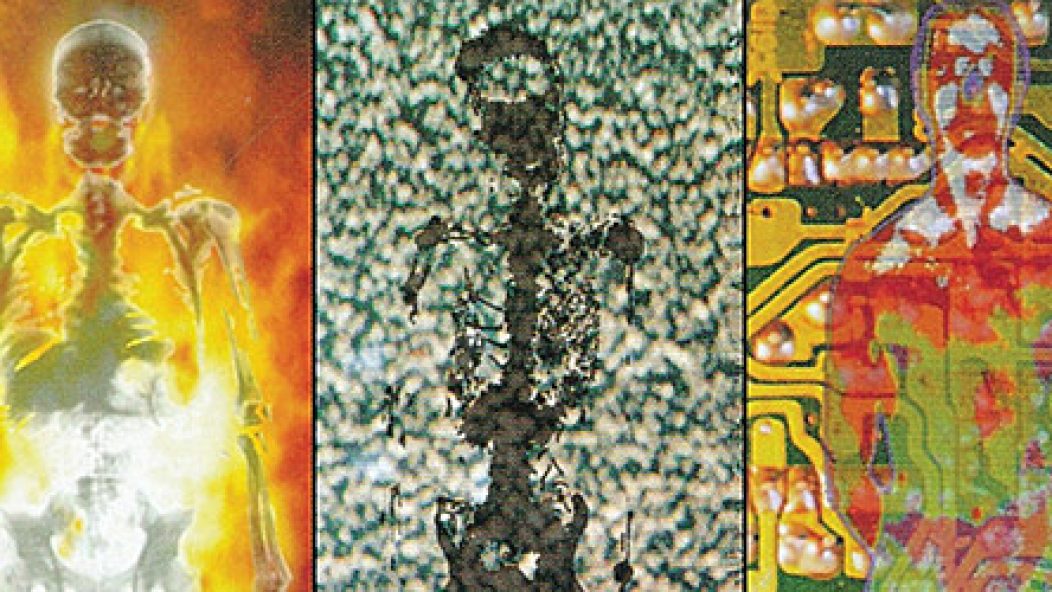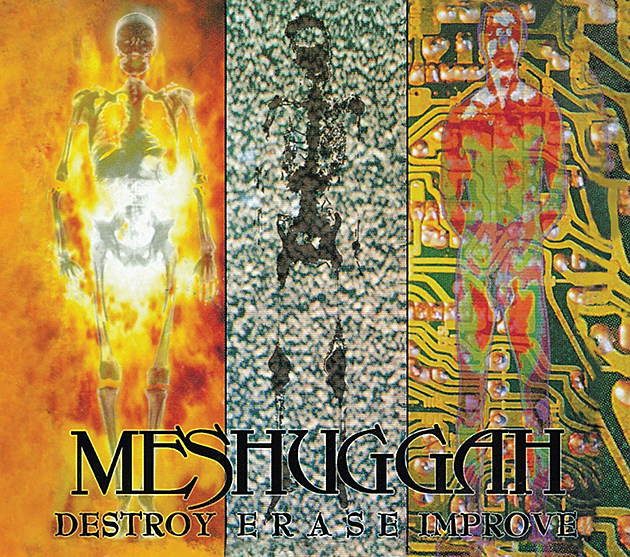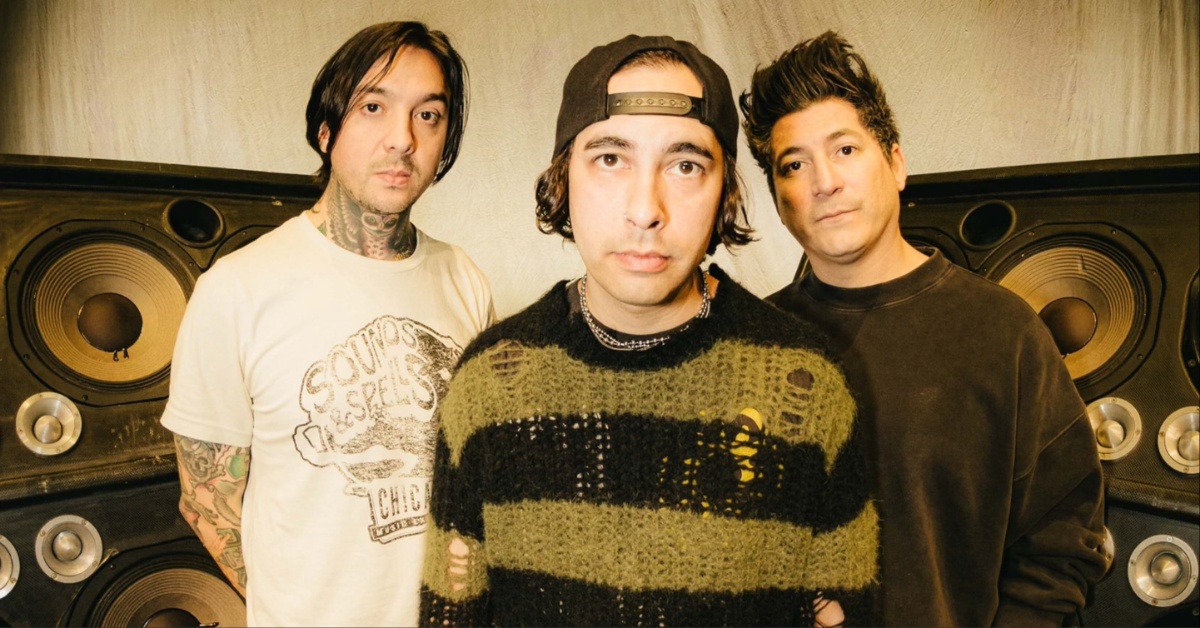
Twenty Against Ten (years later) - Meshuggah from Destroy Erase Improve to Catch Thirtythree
…
Destroy Erase Improve isn’t just an album title, it’s a mission statement.
That record was as much of a leap in creativity and quality from Contradictions Collapse as Cowboys From Hell was from Power Metal. Not only is the album a case of a band finding themselves, but it also opened up an entirely new vocabulary to heavy music. Though it took over a decade for the rest of the world to catch up, Meshuggah’s trademark poly-metric low end assault is as identifiable in modern metal as Iron Maiden’s harmonized leads.
In retrospect it’s clear that Meshuggah were just barely dipping their toes into this concept on Destroy Erase Improve. The 7 against 4 breakdown at the climax of “Future Breed Machine” sounds quaint compared to the alternating measures of 19/16 and 4/4 against 4 in “Bleed” from 2008’s obZen, but even these first small steps sent ripples throughout the genre.
…
…
Though this technique has been broken down and analyzed extensively by everyone from casual fans to graduate students, the use of long form polymeters is more than just a fancy parlor trick. By pairing a sound that feels mechanical due to its very nature with lyrics about the conflict between technology and humanity, Meshuggah strike gold. They match the form of their music with its function.
Destroy Erase Improve hasn’t endured for 20 years just on the basis of highfalutin music theory concepts or philosophical cohesion. Meshuggah’s success and prestige could only be possible if they wrote engaging and high quality music. Rest assured: They did. The fast paced thrash they played on Contradictions Collapse remains, but the riffs on Destroy Erase Improve are even more jagged.
The band, grounded by drummer Tomas Haake’s absurd multitasking, sound like what would happen if you gave instruments to a group of stop motion T-800s from the end of The Terminator—at once herky-jerky and chillingly precise.
The credit for Meshuggah’s deftness doesn’t rest solely on Haake. Destroy Erase Improve marks the emergence of Fredrik Thordendal as a distinctive lead guitarist.
His solos and lead playing emphasize texture first and everything else second, and his signature sound is closer to a computer malfunctioning or a swarm of bees than a traditional metal solo. In the rare moments where the band eases off the gas. For example, on “Acrid Placidity,” Thordendal pulls off a convincing Allan Holdsworth impression. These moments of jazz fusion influenced levity seem deliberately jarring on Destroy Erase Improve, but would serve as the basis of the band’s growing melodic sensibilities.
…
…
Ten years after the release of Destroy Erase Improve Meshuggah took the sound they struck gold with and pushed it to it’s outer limits. Their thrash tempos gradually slowed to a hypnotic lurch, they switched from seven strings guitars to even deeper eight strings and the polymetric patterns grew increasingly byzantine.
If Meshuggah were T-800s on Destroy Erase Improve they had evolved to the liquid metal T-1000s on Catch Thirtythree, jettisoning all human weakness (even Haake replaced by a drum machine!) for cold mechanical precision.
The record flows as a single, nearly uninterrupted, 50-minute-long song. Meshuggah experimented with this form before on the 21-minute long I EP, but the material on Catch Thirtythree is more deliberate. I moved linearly from idea to idea without ever looking in the rearview mirror. At first glance, Catch Thirtythree appears to follow the same structure as it shapeshifts seamlessly from riff to riff like liquid metal. But Meshuggah find ways to reintroduce key motifs throughout the piece, like reusing the chord progression on “Mind’s Mirrors” for the basis of the coda of “Sum.”
The album almost feels like a reaction to the band’s most common criticisms. Think they’re too monotonous? Here’s the same riff for seven minutes straight. Find the polymetric writing to be too convoluted and self-involved? They barely even allude to 4/4 on this record. It is the essence of Meshuggah’s appeal personified into a single continuous block of music, even the previously incongruous jazz fusion sections are incorporated as atmospheric accents.
The importance of Catch Thirtythree is best understood in reference to the albums that Meshuggah released after it. On obZen they returned to writing songs of standard length and relatively fast pace. They then went even further away with Koloss, which highlighted an organic and “live” drum sound. Both are a retreat from the experimental nature of Catch Thirtythree. If everything leading up to Catch Thirtythree is a progression, these two records, despite being good albums, are a regression to normalcy.
The journey that Meshuggah started on Destroy Erase Improve had reached its apex on Catch Thirtythree. On the former they deconstructed the hyper-technical thrash metal of their influences, like Metallica’s …And Justice For All and rebuilt it from scratch, discarding the tropes of 80s heavy metal in favor of a songwriting ethos that felt beamed in from the future. Catch Thirtythree repeated that same process of abstraction with their own established sound. What could they possibly do next? Write a two hour long song? Play on nine string guitars? Use even fewer notes?
The band has always played coy about their intentions in regards to writing deliberately technical music, but the throughline from Destroy Erase Improve to Catch Thirtythree suggests that they knew exactly what they were doing. Never once did the band truly return to the sound of their first record, even on obZen. They knew they had struck gold on Destroy Erase Improve and everything they’ve written since has been an extrapolation of that single idea.
Similarly, it’s telling that other bands only started to figure out how to incorporate Meshuggah’s innovations into their sound after Catch Thirtythree had already taken these ideas to their logical conclusion. Whatever your thoughts on Djent (mine are mostly negative—if we’re going to continue with the Terminator metaphor, Djent bands are our Sam Worthington analogue) the sheer mass of bands that emerged in the wake of Meshuggah’s 1995 to 2005 output astounds.
It’s easy to write off the bands that followed in Meshuggah’s footsteps as pale imitations of the real deal, but consider the following two facts. First, most bands never become singular enough to be so precisely emulated, so that old cliche about imitation being the sincerest form of flattery rings true. Second, Meshuggah themselves could have been accused of unoriginality on Contradictions Collapse. That’s why, in the minds of many, their career began in earnest twenty years ago..
So my advice to Djent bands looking for the longevity of their heroes? Think 1995. Destroy. Erase. Improve.
…
…












